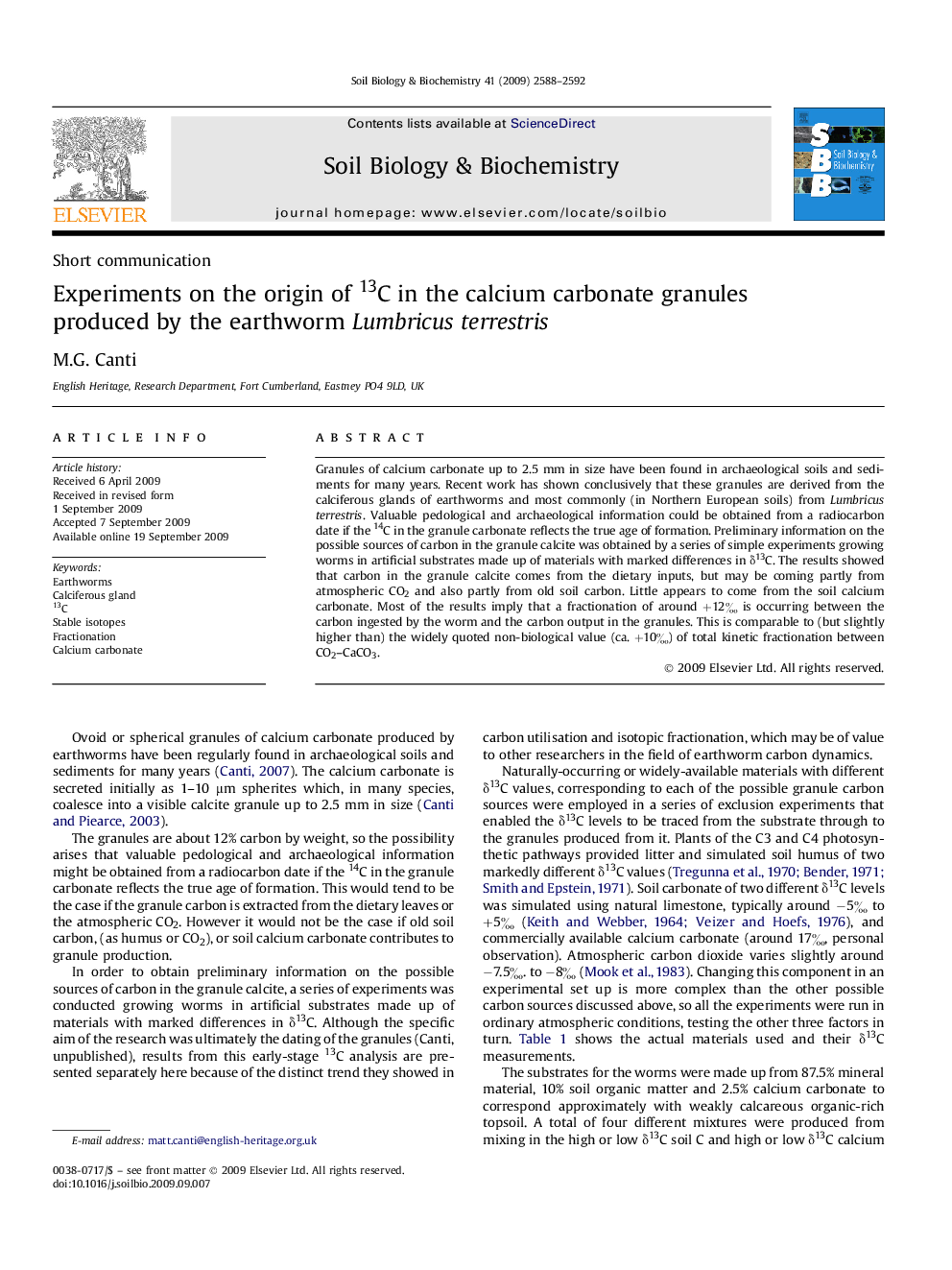| Article ID | Journal | Published Year | Pages | File Type |
|---|---|---|---|---|
| 2025798 | Soil Biology and Biochemistry | 2009 | 5 Pages |
Abstract
Granules of calcium carbonate up to 2.5 mm in size have been found in archaeological soils and sediments for many years. Recent work has shown conclusively that these granules are derived from the calciferous glands of earthworms and most commonly (in Northern European soils) from Lumbricus terrestris. Valuable pedological and archaeological information could be obtained from a radiocarbon date if the 14C in the granule carbonate reflects the true age of formation. Preliminary information on the possible sources of carbon in the granule calcite was obtained by a series of simple experiments growing worms in artificial substrates made up of materials with marked differences in δ13C. The results showed that carbon in the granule calcite comes from the dietary inputs, but may be coming partly from atmospheric CO2 and also partly from old soil carbon. Little appears to come from the soil calcium carbonate. Most of the results imply that a fractionation of around +12â° is occurring between the carbon ingested by the worm and the carbon output in the granules. This is comparable to (but slightly higher than) the widely quoted non-biological value (ca. +10â°) of total kinetic fractionation between CO2-CaCO3.
Related Topics
Life Sciences
Agricultural and Biological Sciences
Soil Science
Authors
M.G. Canti,
